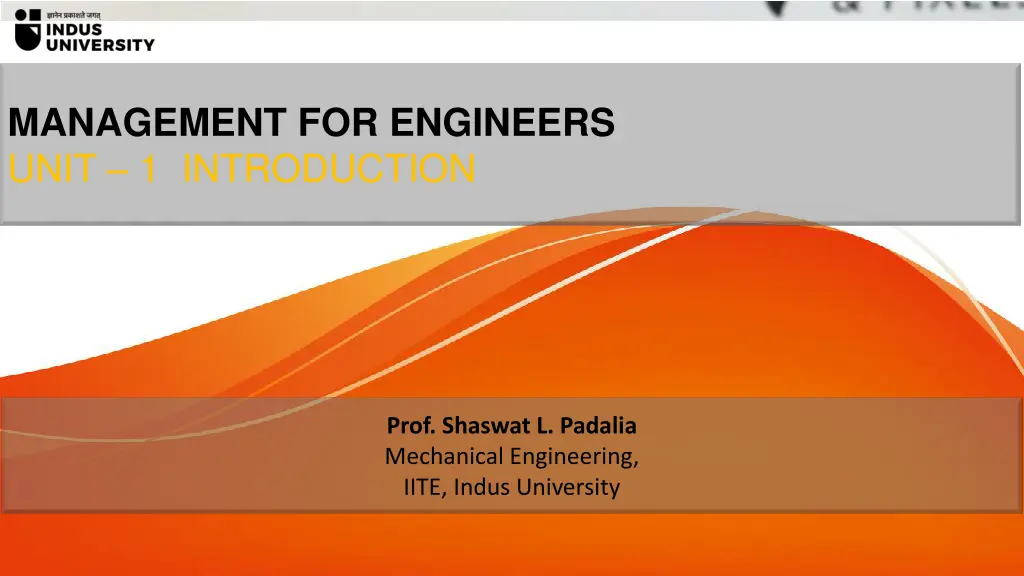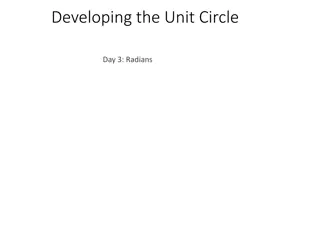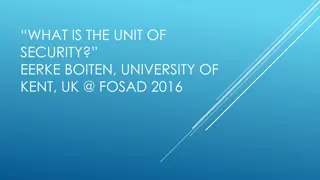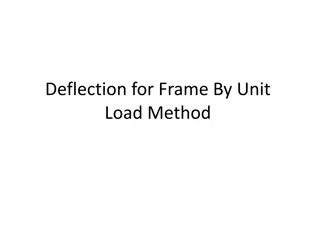
Introduction to Engineering Management
Learn about the principles and practices of engineering management, including its definition, objectives, and importance in optimizing organizational performance and achieving business goals.
Download Presentation

Please find below an Image/Link to download the presentation.
The content on the website is provided AS IS for your information and personal use only. It may not be sold, licensed, or shared on other websites without obtaining consent from the author. If you encounter any issues during the download, it is possible that the publisher has removed the file from their server.
You are allowed to download the files provided on this website for personal or commercial use, subject to the condition that they are used lawfully. All files are the property of their respective owners.
The content on the website is provided AS IS for your information and personal use only. It may not be sold, licensed, or shared on other websites without obtaining consent from the author.
E N D
Presentation Transcript
MANAGEMENT FOR ENGINEERS UNIT 1 INTRODUCTION Prof. Shaswat L. Padalia Mechanical Engineering, IITE, Indus University
ACTIVITY 1 The Ice Breaker 1. Name 2. Hobbies 3. Where do you belong to? 4. Share an image of an object around you right now which defines you and explain why?
Definition Management can be defined as theprocess of administering and controlling the affairs of the organization, irrespective of its nature, type, structure and size. It is an act of creating and maintaining such a business environment wherein the members of the organization can work together, and achieve business objectives efficiently and effectively. 3
Engineering management Engineering management is the application of the practice of management to the practice of engineering. Engineering management is a career that brings together the technological problem-solving ability of engineering and the organizational, administrative, management in order to oversee the operational performance of complex engineering driven enterprises. and planning abilities of 4
Objectives of Management The main objectives of management are: Getting Maximum Results with Minimum Efforts - The main objective of management is to secure maximum outputs with minimum efforts & resources. Management is basically concerned with thinking & utilizing human, material & financial resources in such a manner that would result in best combination. This combination results in reduction of various costs. Increasing the Efficiency of factors of Production - Through proper utilization of various factors of production, their efficiency can be increased to a great extent which can be obtained by reducing spoilage, wastages and breakage of all kinds, this in turn leads to saving of time, effort and money which is essential for the growth & prosperity of the enterprise. Maximum Prosperity for Employer & Employees - Management ensures smooth and coordinated functioning of the enterprise. This in turn helps in providing maximum benefits to the employee in the shape of good working condition, suitable wage system, incentive plans on the one hand and higher profits to the employer on the other hand. Human betterment & Social Justice - Management serves as a tool for the upliftment as well as betterment of the society. Through increased productivity & employment, management ensures better standards of living for the society. It provides justice through its uniform policies. 5
Importance of Management It helps in Achieving Group Goals - It arranges the factors of production, assembles and organizes the resources, integrates the resources in effective manner to achieve goals. It directs group efforts towards achievement of pre-determined goals. By defining objective of organization clearly there would be no wastage of time, money and effort. Management converts disorganized resources of men, machines, money etc. into useful enterprise. These resources are coordinated, directed and controlled in such a manner that enterprise work towards attainment of goals. Optimum Utilization of Resources - Management utilizes all the physical & human resources productively. This leads to efficacy in management. Management provides maximum utilization of scarce resources by selecting its best possible alternate use in industry from out of various uses. It makes use of experts, professional and these services leads to use of their skills, knowledge, and proper utilization and avoids wastage. If employees and machines are producing its maximum there is no under employment of any resources. Reduces Costs - It gets maximum results through minimum input by proper planning and by using minimum input & getting maximum output. Management uses physical, human and financial resources in such a manner which results in best combination. This helps in cost reduction. 6
Importance of Management Establishes Sound Organization - No overlapping of efforts (smooth and coordinated functions). To establish sound organizational structure is one of the objective of management which is in tune with objective of organization and for fulfillment of this, it establishes effective authority & responsibility relationship i.e. who is accountable to whom, who can give instructions to whom, who are superiors & who are subordinates. Management fills up various positions with right persons, having right skills, training and qualification. All jobs should be cleared to everyone. Establishes Equilibrium - It enables the organization to survive in changing environment. It keeps in touch with the changing environment. With the change is external environment, the initial co-ordination of organization must be changed. So it adapts organization to changing demand of market / changing needs of societies. It is responsible for growth and survival of organization. Essentials for Prosperity of Society - Efficient management leads to better economical production which helps in turn to increase the welfare of people. Good management makes a difficult task easier by avoiding wastage of scarce resource. It improves standard of living. It increases the profit which is beneficial to business and society will get maximum output at minimum cost by creating employment opportunities which generate income in hands. Organization comes with new products and researches beneficial for society. 7
Skills of Managers Following are the managerial skills: (i) Technical Skill: It is knowledge of and proficiency in activities involving methods, processes, and procedures. Thus, it involves working with tools and specific techniques. For examples, mechanics work with tools, and their supervisor should have the ability to teach them how to use these tools. Similarly, accountants apply specific techniques in doing their job. (ii) Human Skill: It is the ability to work with people; it is cooperative efforts; it is teamwork; it is the creation of an environment in which people feel secure and free express their opinions. (iii) Conceptual Skill: It is the ability to see the bigpicture to recognize significant elements in a situation, and to understand the relationships among the elements. (iv) Design Skill: It is the ability to solve problems in ways that will benefit the enterprise. To be effective, particularly at upper organizational levels, managers must be able to do more than see a problem. They must have, in addition, the skill of a good design engineer in working out a practical solution to a problem. Technical skills are of greatest importance at the supervisory level. Human skills are also helpful in the frequent interactions with subordinates. Conceptual skills, on the other hand, are usually not critical for lower-level supervisors. At the middle management level, the need for technical skills decreases human skill is still essential; the conceptual skills gain in importance. At the top management level, conceptual and design abilities and human skills are especially valuable, but there is relatively little need for technical abilities. It is assumed, especially in large companies, that chief executives can utilize the technical abilities of their subordinates. In smaller firms, however, technical experience may still be quite important. 8
Role of a Manager Managers must establish an environment in which people can accomplish group goals with the least amount of time, money, materials, and personal dissatisfaction or in which they can achieve as much as possible of a desired goal with available resources. In a non-business enterprise such as a police department, as well as in units of a business (such as an accounting department) that are not responsible for total business profits, managers still have goals and should strive to accomplish them with the minimum of resource or to accomplish as much as possible with available resources. 9
Roles of a Manager Interpersonal Roles: (1) The figure head role (performing ceremonial and social duties as the organisation s representative (2) The leader role and (3) The liaison role (communicating particularly with outsiders). Informational Roles: (1) The recipient role (receiving information about the operation of an enterprise) (2) The disseminator role (passing in formation to subordinates) and (3) The spokesperson role (transmitting information to those outside the organisation). Decision Roles: (1) The entrepreneurial role. (2) The disturbance handler role. (3) The resource allocator role. (4) The negotiator role. 10
Levels of Management The term Levels of Management refers to a line of demarcation between various managerial positions in an organization. The number of levels in management increases when the size of the business and work force increases and vice versa. The level of management determines a chain of command, the amount of authority & status enjoyed by any managerial position. The levels of management can be classified in three broad categories: Top level / Administrative level Middle level / Executory Low level / Supervisory / Operative / First-line managers. 11
Levels of Management Top Level of Management It consists of board of directors, chief executive or managing director. The top management is the ultimate source of authority and it manages goals and policies for an enterprise. It devotes more time on planning and coordinating functions. The role of the top management can be summarized as follows - Top management lays down the objectives and broad policies of the enterprise. It issues necessary instructions for preparation of department budgets, procedures, schedules etc. It prepares strategic plans & policies for the enterprise. It appoints the executive for middle level i.e. departmental managers. It controls & coordinates the activities of all the departments. It is also responsible for maintaining a contact with the outside world. It provides guidance and direction. The top management is also responsible towards the shareholders for the performance of the enterprise. 13
Levels of Management Middle Level of Management The branch managers and departmental managers constitute middle level. They are responsible to the top management for the functioning of their department. They devote more time to organizational and directional functions. In small organization, there is only one layer of middle level of management but in big enterprises, there may be senior and junior middle level management. Their role can be emphasized as - They execute the plans of the organization in accordance with the policies and directives of the top management. They make plans for the sub-units of the organization. They participate in employment & training of lower level management. They interpret and explain policies from top level management to lower level. They are responsible for coordinating the activities within the division or department. It also sends important reports and other important data to top level management. They evaluate performance of junior managers. They are also responsible for inspiring lower level managers towards better performance. 14
Levels of Management Lower Level of Management Lower level is also known as supervisory / operative level of management. It consists of supervisors, foreman, section officers, superintendent etc. According to R.C. Davis, Supervisory management refers to those executives whose work has to be largely with personal oversight and direction of operative employees . In other words, they are concerned with direction and controlling function of management. Their activities include - Assigning of jobs and tasks to various workers. They guide and instruct workers for day to day activities. They are responsible for the quality as well as quantity of production. They are also entrusted with the responsibility of maintaining good relation in the organization. They communicate workers problems, suggestions, and recommendatory appeals etc to the higher level and higher level goals and objectives to the workers. They help to solve the grievances of the workers. They supervise & guide the sub-ordinates. They are responsible for providing training to the workers. They arrange necessary materials, machines, tools etc for getting the things done. They prepare periodical reports about the performance of the workers. They ensure discipline in the enterprise. They motivate workers. They are the image builders of the enterprise because they are in direct contact with the workers. 15
Functions of Management Functions of Management Management has been described as a social process involving responsibility for economical and effective planning & regulation of operation of an enterprise in the fulfillment of given purposes. It is a dynamic process consisting of various elements and activities. These activities are different from operative functions like marketing, finance, purchase etc. Rather these activities are common to each and every manger irrespective of his level or status. Different experts have classified functions of management. According to George & Jerry, There are four fundamental functions of management i.e. planning, organizing, actuating and controlling . According to Henry Fayol, To manage is to forecast and plan, to organize, to command, & to control . Whereas Luther Gullickhas given a keyword POSDCORB where P stands for Planning, O for Organizing, S for Staffing, D for Directing, Co for Co-ordination, R for reporting & B for Budgeting. But the most widely accepted are functions of management given by KOONTZ and O DONNEL i.e. Planning, Organizing, Staffing, Directing and Controlling. For theoretical purposes, it may be convenient to separate the function of management but practically these functions are overlapping in nature i.e. they are highly inseparable. Each function blends into the other & each affects the performance of others. 16
Functions of Management Planning It is the basic function of management. It deals with chalking out a future course of action & deciding in advance the most appropriate course of actions for achievement of pre-determined goals. According to KOONTZ, Planning is deciding in advance - what to do, when to do & how to do. It bridges the gap from where we are & where we want to be . CS B 25.01.22 A plan is a future course of actions. It is an exercise in problem solving & decision making. Planning is determination of courses of action to achieve desired goals. Thus, planning is a systematic thinking about ways & means for accomplishment of pre-determined goals. Planning is necessary to ensure proper utilization of human & non- human resources. It is all pervasive, it is an intellectual activity and it also helps in avoiding confusion, uncertainties, risks, wastages etc. 18
Functions of Management - Organizing Organizing It is the process of bringing together physical, financial and human resources and developing productive relationship amongst them for achievement of organizational goals. According to Henry Fayol, To organize a business is to provide it with everything useful or its functioning i.e. raw material, tools, capital and personnel s . To organize a business involves determining & providing human and non-human resources to the organizational structure. Organizing as a process involves: Identification of activities. Classification of grouping of activities. Assignment of duties. Delegation of authority and creation of responsibility. Coordinating authority and responsibility relationships. 19
Functions of Management - Principles of Organizing Principles of Organizing The organizing process can be done efficiently if the managers have certain guidelines so that they can take decisions and can act. To organize in an effective manner, the following principles of organization can be used by a manager. 1. According to the principle, the whole work of a concern should be divided amongst the subordinates on the basis of qualifications, abilities and skills. It is through division of work achieved which results in effective organization. Principle of Specialization specialization can be 2. Principle of Functional Definition According to this principle, all the functions in a concern should be completely defined to the managers and subordinates. This can be done by responsibilities, authority and relationships of people authority-responsibility relationships helps in take place effectively. For example, the primary functions of production, marketing and finance and the authority responsibility relationships in these departments shouldbe clearly person attached to that department. Clarification in the efficient organization. and clearly duties, clearly each defining other. the towards Clarifications in achieving co-ordination and thereby organization can defined to every authority-responsibility relationship helps in 20
Functions of Management - Principles of Organizing 3. Principles of Span of Control/Supervision According to this principle, span of control is a span of supervision which depicts the number of employees that can be handled and controlled effectively by a single manager. According to this principle, a manager should be able to handle what number of employees under him should be decided. This decision can be taken by choosing either froma wide or narrow span. There are two types of span of control:- Wide span of control- It is one in which a manager can supervise and control effectively a large group of persons at one time. The features of this span are:- Less overhead cost of supervision Prompt response from the employees Better communication Better supervision Better co-ordination Suitable for repetitive jobs According to this span, one manager can effectively and efficiently handle a large number of subordinates at one time. Narrow span of control- According to this span, the work and authority is divided amongst many subordinates and a manager doesn't supervises and control a very big group of people under him. The manager according to a narrow span supervises a selected number of employees at one time. The features are:- Work which requires tight control and supervision, for example, handicrafts, ivory work, etc. which requires craftsmanship, there narrow span is more helpful. Co-ordination is difficult to be achieved. Communication gaps can come. Messages can be distorted. Specialization work can be achieved. 21
Functions of Management - Principles of Organizing Factors influencing Span of Control Managerial abilities- In the concerns where managers are capable, qualified and experienced, wide span of control is always helpful. Competence of subordinates- Where the subordinates are capable and competent and their understanding levels are proper, the subordinates tend to very frequently visit the superiors for solving their problems. In such cases, the manager can handle large number of employees. Hence wide span is suitable. Nature of work- If the work is of repetitive nature, wide span of supervision is more helpful. On the other hand, if work requires mental skill or craftsmanship, tight control and supervision is required in which narrow span is more helpful. IT B 28. 01. 22 Delegation of authority- When the work is delegated to lower levels in an efficient and proper way, confusions are less and congeniality of the environment can be maintained. In such cases, wide span of control is suitable and the supervisors can manage and control large number of sub- ordinates at one time. Degree of decentralization- Decentralization is done in order to achieve specialization in which authority is shared by many people and managers at different levels. In such cases, a tall structure is helpful. There are certain concerns where decentralization is done in very effective way which results in direct and personal communication between superiors and sub- ordinates and there the superiors can manage large number of subordinates very easily. In such cases, wide span again helps. 22
Functions of Management - Principles of Organizing 4. Principle of Scalar Chain Scalar chain is a chain of command or authority which flows from top to bottom. With a chain of authority available, wastages of resources are minimized, communication is affected, overlapping of work is avoided and easy organization takes place. A scalar chain of command facilitates work flow in an organization which helps in achievement of effective results. As the authority flows from top to bottom, it clarifies the authority positions to managers at all level and that facilitates effective organization. 5. Principle of Unity of Command It implies one subordinate-one superior relationship. Every subordinate is answerable and accountable to one boss at one time. This helps in avoiding communication gaps and feedback and response is prompt. Unity of command also helps in effective combination of resources, that is, physical, financial resources which helps in easy co-ordination and, therefore, effective organization. 23
Functions of Management - Staffing Staffing It is the function of manning the organization structure and keeping it manned. Staffing has assumed greater importance in the recent years due to advancement of technology, increase in size of business, complexity of human behavior etc. The main purpose of staffing is to put right man on right job i.e. square pegs in square holes and round pegs in round holes. According to Kootz & O Donell, Managerial function of staffing involves manning the organization structure through proper and effective selection, appraisal & development of personnel to fill the roles designed un the structure . Staffing involves: CS A 28.01.2 2 Manpower Planning (estimating man power in terms of searching, choose the person and giving the right place). Recruitment, Selection & Placement. Training & Development. Remuneration. Performance Appraisal. Promotions & Transfer. 24
Functions of Management Efficient staffing involves the following activities or steps: 1. Manpower Planning This is the first step in the process of staffing. It is concerned with determining the number and types of staff required for the organisation. 2. Employment of Personnel It involves recruitment and selection of personnel as needed in the organisation. Recruitment refers to identification of the sources of manpower availability and making of efforts to secure applicants for the various job positions in the organisation. Selection is the process of choosing and appointing the right candidates for various jobs in the organisation. It includes receiving and screening of applications, employment tests, interview and medical examination of candidates. 3. Placement When a new employee reports for duty, he is to be placed on the job for which he is best suited. Placement is a very important process as it can ensure right person doing the right job . If a new employee is not able to adjust on his job, he may be given some training or transferred to some other job. 25
Functions of Management 4. Induction Induction is concerned with the process of introducing or orienting a new employee to the organisation. The new employees are familiarised with their units, supervisors and fellow employees. They are also to be informed about the working hours, tea or coffee breaks, lunch period, procedure for availing leaves, safety precautions, medical facilities, transport facilities, etc. 5. Training Systematic training helps in increasing the skills and knowledge of employees in doing their job. Various methods of training can be used to enhance the knowledge and skills of the employees. On-the-job methods are more useful for the operative employees and off-the-job methods can also be employed for the supervisory personnel. 6. Compensation Remuneration of workers involves fixation of their wages and salaries depending upon their level, nature of work, degree of risk involved, etc. 7. Performance Appraisal It is concerned with the rating or evaluation of the performance of the employees. Transfer 26 and promotion of the staff are based on performance appraisal.
Functions of Management The following steps are involved in staffing process: (i) Estimating the manpower requirements The first and foremost step in the process of staffing is estimating the manpower requirements. Understanding manpower requirements is not merely a matter of knowing how many people we need but also of what type. Estimation of manpower requirements involves workload analysis and workforce analysis. (ii) Recruitment Recruitment may be defined as the process of searching for prospective employees and stimulating them to apply for jobs in the organisation. (iii) Selection Selection is the process of choosing from among the pool of the prospective job candidates that is developed at the stage of recruitment. (iv) Placement and Orientation Placement refers to the employee occupying the position or post for which the person has been selected. Orientation is introducing the selected employee to other employees and familiarising him with the rules and policies of the organisation. 27
Functions of Management Continue (v) Training and Development- Training and development of employees is very important in order to improve their skills and to give them an opportunity for their career advancement. (vi) Performance Appraisal It refers to rating or evaluating the current performance of employees according to certain predetermined standards. Transfers and promotions of the staff are based on performance appraisal. (vii) Promotion and Career Planning It is necessary for every organisation to keep promotion and career plans of an employee into consideration so as to ensure job satisfaction. (viii) Compensation Organisations pay wages and salaries to their employees for which they need to establish wages and salary plans. There are various ways to prepare different pay plans depending upon the worth of the jobs. 28
Functions of Management Directing It is that part of managerial function which actuates the organizational methods to work efficiently for achievement of organizational purposes. It is considered life-spark of the enterprise which sets it in motion the action of people because planning, organizing and staffing are the mere preparations for doing the work. Direction is that inert-personnel aspect of management which deals directly with influencing, guiding, supervising, motivating sub-ordinate for the achievement of organizational goals. Direction has following elements: Communication Supervision Motivation Leadership Supervision- implies overseeing the work of subordinates by their superiors. It is the act of watching & directing work & workers. Motivation- means inspiring, stimulating or encouraging the sub-ordinates with zeal to work. Positive, negative, monetary, non-monetary incentives may be used for this purpose. Leadership- may be defined as a process by which manager guides and influences the work of subordinates in desired direction. Communications- is the process of passing information, experience, opinion etc from one person to another. It is a bridge of understanding. 29
Functions of Management Controlling It implies measurement of accomplishment against the standards and correction of deviation if any to ensure achievement of organizational goals. The purpose of controlling is to ensure that everything occurs in conformities with the standards. An efficient system of control helps to predict deviations before they actually occur. According to Theo Haimann, Controlling is the process of checking whether or not proper progress is being made towards the objectives and goals and acting if necessary, to correct any deviation . According to Koontz & O Donell Controlling is the measurement & correction of performance activities of subordinates in order to make sure that the enterprise objectives and plans desired to obtain them as being accomplished . Therefore controlling has following steps: Establishment of standard performance. Measurement of actual performance. Comparison of actual performance with the standards and finding out deviation if any. Corrective action. 30
ASSIGNMENT - 1 1. Define management and engineering management. What are the objectives of management ? 2. What are the skills required for a manager ? 3. Explain the roles of a Manager. 4. Explain the levels of management. 5. Explain the functions of management. 6. Explain the principles of organizing. 7. Explain the steps of efficient staffing. 8. Explain the steps involved in staffing process.






















